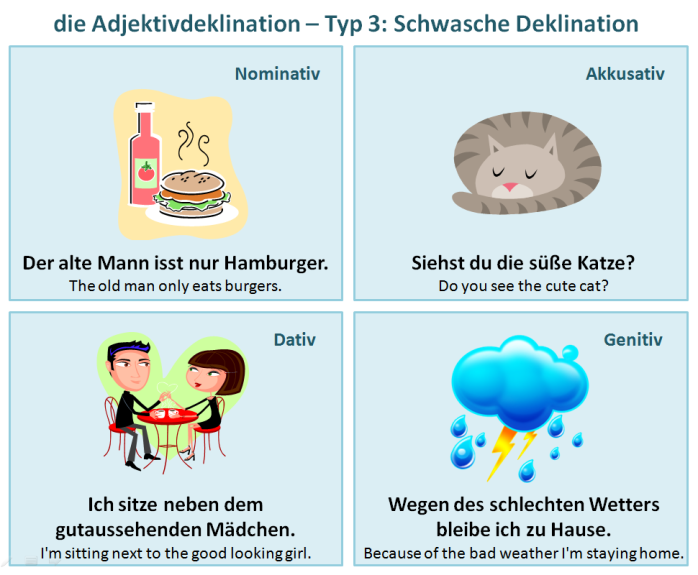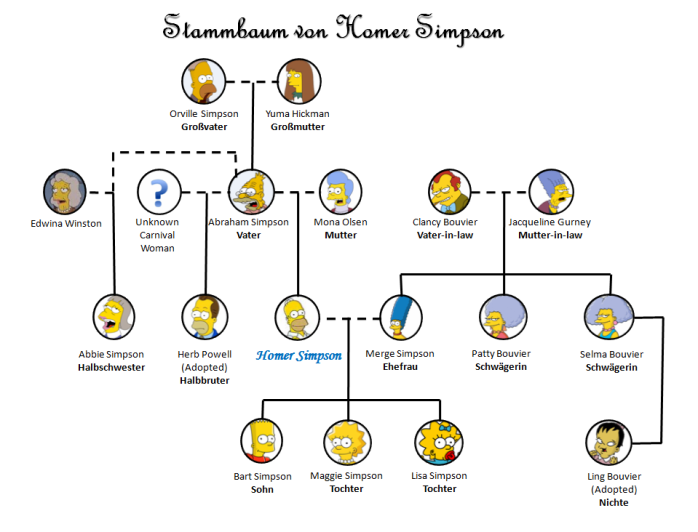Hello everyone!!!
I’m back again with new posts and I’m very (VERY) happy about the compliments I’ve been receiving about my blog!!! Thank you very much!! >.<
We need to finish the MGGC… “Marathon of German Grammatical Cases”… (I’m just giving a name to it!) hahahha 😉
So, next step: the dative case.
The dative case is known as the indirect object. The indirect object (dative) is usually the receiver of the direct object (accusative), but some German verbs do not take an accusative object. Unlike the accusative, which only changes in the masculine gender, the dative changes in all genders and in the plural. In addition, the dative is also used after certain dative verbs and with dative prepositions. Click here for more informations.
The question word in the dative case is ,,wem” ([to] whom):
,,Wem hast du das Buch gegeben?” (Whom did you give book?)
NOTES!
- Some masculine nouns add an ,,-en” or ,,-n” ending in the dative and in all other cases besides the nominative ⇨ ,,dem/einem Jungen” (the/a boy).
- In the dative, plural nouns add an ,,-en” or ,,-n” if the plural does not already end in ,,-n“, except for plurals ending in ,,-s” ⇨ ,,den/keinen Leuten” (the/no people).
DATIVE PREPOSITIONS
Some German prepositions are governed by the dative case. There are two kinds of dative prepositions: those that are always dative and never anything else and certain “two-way” prepositions that can be either dative or accusative (depending on how they are used).

Here is a list of the dative-only prepositions.
| Dative Prepositions |
| Deutsch |
Englisch |
| aus |
from, out of |
| außer |
except for, besides |
| bei |
at, near |
| gegenüber |
across from, opposite |
| mit |
with, by |
| nach |
after, to |
| seit |
since (time), for |
| von |
by, from |
| zu |
at, to |
NOTES!
- ,,Gegenüber” can go before or after its object.
- The genitive prepositions ,,statt” (instead of), ,,trotz” (in spite of), ,,während” (during) and ,,wegen” (because of) are often used with the dative in spoken German, particularly in certain regions.
The meaning of a two-way preposition often depends on whether it is used with the dative or accusative case.
Two-Way Prepositions
Accusative/Dative |
| Deutsch |
Englisch |
| an |
at, on, to |
| auf |
at, to, on, upon |
| hinter |
behind |
| in |
in, into |
| neben |
beside, near, next to |
| über |
about, above, across, over |
| unter |
under, among |
| vor |
in front of, before; ago (time) |
| zwischen |
between |
The basic rule for determining whether a two-way preposition should have an object in the accusative or dative case is motion versus location. The following rule applies only to the so-called “two-way” or “dual” prepositions in German.
- The accusative occurs when there is motion towards something or to a specific location (,,wohin?“, where to?).
,,Wir gehen ins Kino.“ (ins = in das) (We’re going to the movies/cinema.)
,,Legen Sie das Buch auf den Tisch.” (Put/Lay the book on the table.)
- The dative occurs when there is no motion at all or random motion going nowhere in particular (,,wo?“, where (at)?).
,,Wir sind im Kino.“ (im = in dem) (We’re at the movies/cinema.)
,,Das Buch liegt auf dem Tisch.“ (The book’s lying on the table.)
Many of these prepositions have another meaning in common everyday idioms and expressions: ,,auf dem Lande” (in the country), ,,um drei Uhr” (at three o’clock), ,,unter uns” (among us), ,,am Mittwoch” (on Wednesday), ,,vor einer Woche” (a week ago), etc. These expressions can be learned as vocabulary without worrying about the grammar involved.
Here are some other dative case examples (the dative word, preposition or expression is in red):
,,Der Polizist gibt dem Fahrer einen Strafzettel.” (The policeman is giving the driver a ticket.)
,,Mit der Bahn fahren wir.” (We’re going by train.)
,,Meiner Meinung nach ist es zu teuer.” (In my opinion it’s too expensive.)
,,Das Hotel ist dem Bahnhof gegenüber.” (The hotel is across from the train station.)
,,Er arbeitet bei einer großen Firma.” (He works at a big company.)
,,Wir verbringen eine Woche am See.” (We’re spending a week at the lake.)
,,Wir machen das mit einem Computer.” (We do that with a computer.)
That is what I’ve learned about dative case today…
Next post (Genitive case) we will finish the “MGGC”!!!
Bye! 😉






